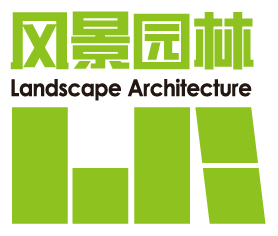Abstract:
Objective The Nanjiang Ancient Waterway is a uniquely distinctive ancient waterway among the ancient post roads in southern Guangdong, with settlements along it flourishing in history. Although the scale and prosperity of individual settlements are not comparable to those in other parts of Lingnan, under the influence of multicultural integration, the value of the multicultural landscape characteristics presented by these settlements is prominent. Exploring the landscape characteristics of settlements along the Nanjiang Ancient Waterway and influencing factors thereof from the macro perspective of “cultural routes” can break through the limitations of the point-like research model of “studying individual villages in isolation” and help tap the multi-dimensional value of settlements.
Methods The cultural routes focus on integrity and emphasizes the cognition of cultural phenomena through dynamic and historical functions, which provides a holistic research perspective for the research on settlement landscape along the Nanjiang Ancient Waterway. Therefore, based on the theoretical framework of “human – land – property” of cultural geography in combination with field investigation and GIS spatial analysis, 65 traditional settlements along the Nanjiang Ancient Waterway are selected as the research object by typology analysis method from the three functional dimensions of human settlement, commerce and culture of cultural routes, and the landscape characteristics of settlements along the ancient waterway and the influencing factors thereof are analyzed.
Results 1) As an important traffic foundation for the formation and development of settlements, ancient waterway have a significant impact on the differentiation of landscape types. The settlement landscape along Nanjiang Ancient Waterway can be divided into three categories: Human settlement landscape, commercial landscape and cultural landscape, with different spatial distribution, morphological characteristics and cultural characteristics. The settlements along the Nanjiang Ancient Waterway present characteristics of “being rich in layers, mountains and waters embracing each other”, “adapting to the terrain and following the natural flow of wind and water”, and “a crisscross network of canals with dikes and dams encircling”. 2) The commercial function of the Nanjiang Ancient Waterway and the formation of the commercial landscape of settlements have a mutually promoting relationship, forming commercial landscape characteristics of “interconnecting land and water routes, with ferries and crossings interwoven”, and “setting up fairs by the water, and forming markets along streets”. 3) During Ming and Qing dynasties, the “policy of recruiting people to settle and be registered” spurred a large number of immigrants to move in along the Nanjiang Ancient Waterway, and establish clans and set up villages there. The mutual exchange of immigrant cultures gave rise to cultural landscapes featuring “separation of residences and ancestral halls with mixed styles” and “pantheistic worship, and water-based landscape creation”. In Ming and Qing dynasties, the Ming government encouraged people to migrate there, and the policy of granting household registration prompted a large number of immigrants to move in along the Nanjiang Ancient Waterway, and establish clans and set up villages there. This led to the formation of diversified and mixed-style landscapes of residences and ancestral halls as well as religious cultural landscapes, boasting unique regional cultural characteristics of Nanjiang.
Conclusion The settlements along the Nanjiang Ancient Waterway, are the spatial carriers of human settlement landscape, commerce, culture and other functions. The population base provided by the immigration policy is the starting point of settlement development. As a key factor, immigration policy provides the necessary population base for the formation of settlements along the ancient waterway, and is the starting point of settlement development. The distribution and rise of immigrant settlements along the Nanjiang Ancient Waterway, benefited from the efficient water transportation system constructed by the ancient waterway network, and the flourishing commercial development of settlements along the ancient Waterway. The mutual fostering between population mobility and trade greatly promotes the exchange and integration of immigrant culture, giving birth to Nanjiang regional cultural landscape. Revealing the landscape characteristics of settlements along the cultural routes and the influencing factors thereof from the perspective of integrity and dynamics can provide a basis for the overall protection of settlements along the Nanjiang Ancient Waterway. Under the background of rapid urbanization, the protection of settlement landscape along the Nanjiang Ancient Waterway has encountered severe challenges such as the decline of traditional features and the imbalance of development. In the reconstruction of settlement landscape, we should adhere to the principles of integrity, dynamics and sustainability of cultural route protection, integrate natural and human landscape resources, and rationally activate and utilize settlement landscape. The researches advocates to well protect the Nanjiang Ancient Waterway through the chain of beads, the implementation of zoning – subsection – grading differentiation development, the establishment of the overall spatial control system for the protection of settlements along the Nanjiang Ancient Waterway, the construction of cultural routes for the integration of ecology, culture and industry, the creation of nostalgic settlement memory scene, and the promotion of the revitalization and development of settlements.

 下载:
下载:
